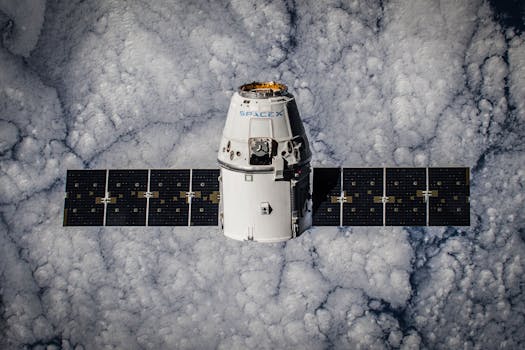Beyond the Atmosphere: The Future of Satellite Technology for Surveillance and Connectivity

Beyond the Atmosphere: The Future of Satellite Technology for Surveillance and Connectivity
The future of satellite technology is rapidly evolving, with advancements in surveillance and connectivity capabilities. Satellite technology has come a long way since its inception, and it continues to play a vital role in various aspects of our lives, including communication, navigation, weather forecasting, and surveillance. In this article, we will delve into the latest developments and innovations in satellite technology, with a focus on its applications in surveillance and connectivity.
Satellite technology has revolutionized the way we communicate and access information. With the launch of the first artificial satellite, Sputnik, in 1957, the world witnessed a new era of space exploration and technological advancements. Since then, satellites have become an integral part of our daily lives, enabling global communication, navigation, and weather forecasting. The use of satellites in surveillance and connectivity has also become increasingly important, with applications in fields such as national security, disaster management, and telecommunications.
The latest advancements in satellite technology have led to the development of smaller, more efficient, and cost-effective satellites. The use of nanosatellites and CubeSats has become increasingly popular, with many organizations and governments launching their own satellites into space. These small satellites are equipped with advanced sensors and cameras, enabling high-resolution imaging and surveillance capabilities. The development of satellite constellations, such as those launched by SpaceX and Amazon, has also improved global connectivity, providing high-speed internet access to remote and underserved areas.
One of the most significant applications of satellite technology is in the field of surveillance. Satellites equipped with advanced sensors and cameras can provide high-resolution images of the Earth’s surface, enabling monitoring of natural disasters, tracking of climate change, and detection of illegal activities such as deforestation and poaching. The use of satellites in surveillance has also become crucial for national security, with many governments using satellites to monitor border activity, detect missile launches, and track the movement of troops.
In addition to surveillance, satellite technology has also played a vital role in improving global connectivity. The launch of satellite constellations has enabled the provision of high-speed internet access to remote and underserved areas, bridging the digital divide and promoting economic development. Satellites have also enabled the provision of critical services such as emergency response, navigation, and weather forecasting, saving countless lives and improving the overall quality of life.
Another significant development in satellite technology is the use of artificial intelligence (AI) and machine learning (ML) algorithms. These algorithms can be used to analyze vast amounts of data collected by satellites, enabling the detection of patterns and anomalies that may not be visible to the human eye. The use of AI and ML algorithms has also improved the accuracy of satellite-based surveillance systems, enabling the detection of small objects and activities that may be missed by human analysts.
Despite the many advancements in satellite technology, there are still several challenges that need to be addressed. One of the major concerns is the issue of space debris, with thousands of inactive satellites and other objects orbiting the Earth. This debris can pose a significant threat to operational satellites, as well as to the environment and human health. The development of sustainable and responsible satellite technologies is therefore crucial, with a focus on reducing waste, improving efficiency, and promoting environmental stewardship.
In conclusion, the future of satellite technology is rapidly evolving, with advancements in surveillance and connectivity capabilities. The use of satellites in surveillance and connectivity has become increasingly important, with applications in fields such as national security, disaster management, and telecommunications. As satellite technology continues to advance, it is crucial that we address the challenges associated with its development and use, promoting sustainable and responsible practices that benefit both humanity and the environment.



